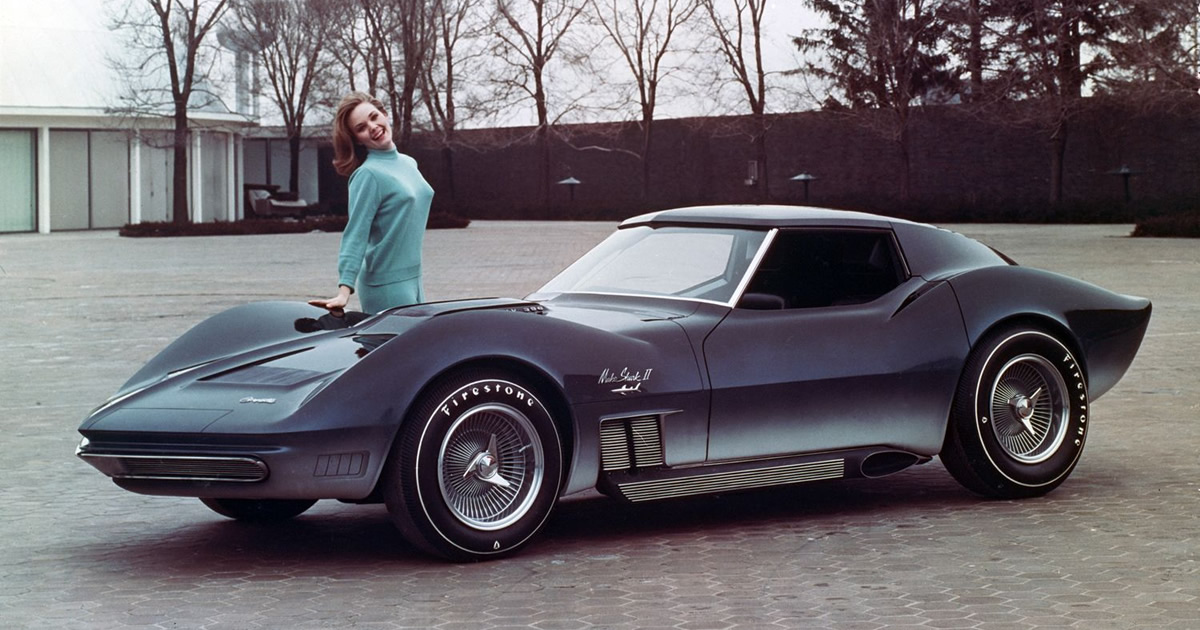Corvette Mako Shark II and Manta Ray Corvette: Interview with Larry Shinoda
Mako Shark II and Manta Ray: Interview with Larry Shinoda
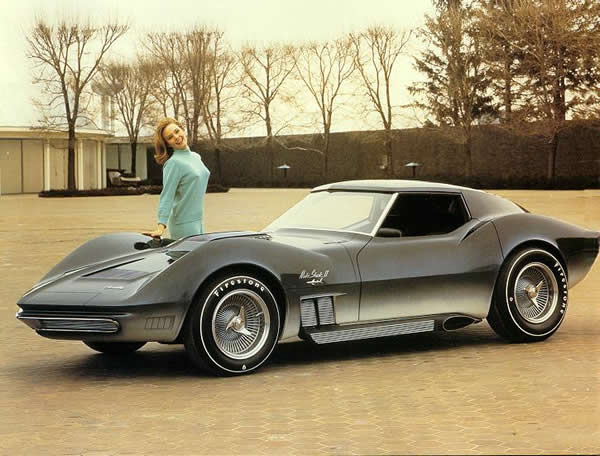 |
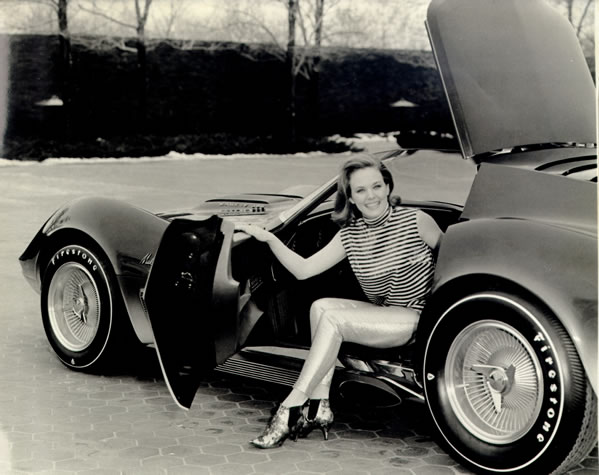 |
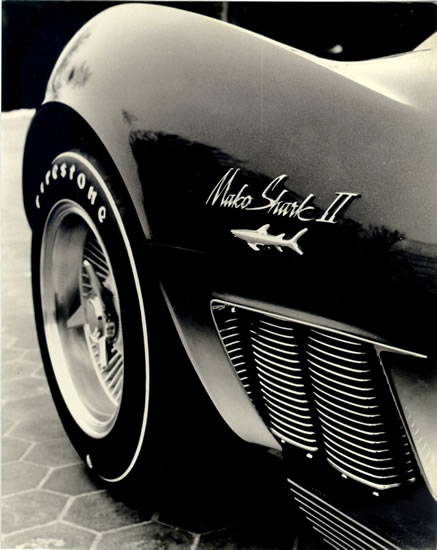 |
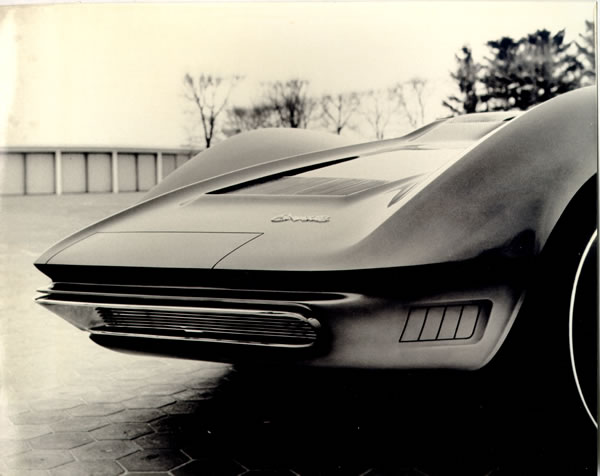 |
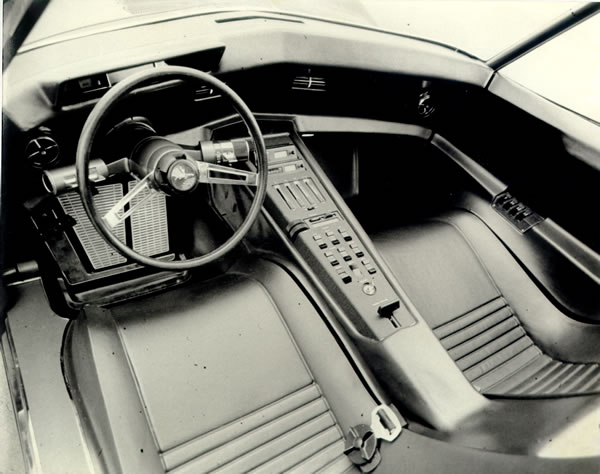 |
 |
Mako Shark II and Manta Ray: Interview with Larry Shinoda
©Wayne Ellwood, 1995
Used here with permission by the author
From Larry Shinoda:
I can tell you more about Mako I another time, Right now let's talk about Mako II. The year was 1965 and we were already looking forward to showing-off a design exercise for the introduction of the 1968 car at the New York show.
This one was truly a Bill Mitchell inspired car with the narrow waist or coke-bottle shape and pronounced fenders. Bill and Zora didn't agree on the design at first. But this was in the era when design came first and engineering then got to work within the major parameters we set.
Actually, Zora thought that the shape imposed some limitations on the passenger pod. But I think he changed his mind a little one day at the track. He was driving the new car at the proving grounds when there was a tire failure. Zora held it up against the wall until he ground the fenders off right down to the door line and wheels. By the time it got down this far, the car had stopped. After that, I think he changed his mind about the utility of the wider fender area.
There is always some confusion about the Mako Shark II based on different photos, too. There were, in fact, two primary versions of the Mako Shark II and then the Manta Ray version. So three basic versions with quite a few re-paints and minor changes over the years.
Mako Shark I, as shown at the New York show in January 1965 was a non-running model with the outside side pipes rising up into the front fenders. Mako Shark II, first shown at the Paris Auto Salon in October of the same year, was now a running model with more conventional rear-exiting exhaust system. The exposed ends of the exhaust were quite highly styled in a boxed and finned arrangement much like I had done for the SS Racer.
Speaking of models, I should also mention the young girl who is often seen in the GM photos of the day posing with this car. That was Connie Van Dyke and she was Miss Teen America just two years before. She was found by Myron Scott (the guy who named the Corvette) and he got her into a lot of the shoots. She was really a nice girl and reflected the style GM was looking for. Myron is still around Detroit and you can talk to him, but he won't travel.
The were several core design elements which were common to both the non-running and running models, of course. The basic design included the chopped roof, hinged roof panel which raised to permit easier entry, the sharp-edged fender lines, highly styled front clip, hood bulge and upswept tail. There were lots of other gadgets thrown on the car as repeats from Mako I, including the prism-type periscope rearview mirror, the pop-up brake flaps, James Bond retractable bumpers, and the louvered rear window treatment. When the car was converted to Manta Ray the louvered window concept was dropped in favour of the more conventional sugar-scoop arrangement.
Now, going back to the inception of the Mako Shark II, I think that it is fair to say that the design for what turned out to be the 1968 was not so far locked-in that public reaction to this show car was not going to have some effect. In fact, even as we were drawing the two of them there were perceptible differences in the sharpness of the lines and the exaggeration of major features like the wheel bulges. There was certainly no shortage of reaction in the automobile media to some of the "added" features that Bill had requested even when some of it might have been just a little short-sighted. But that's the purpose of some of these cars. The public reaction has to be interpreted, you don't just take it at face value. People, by and large, tend to think "right now" while we are supposed to think "in the future". As I look back on the articles which have been written about the cars 20 years later, I see a lot of retrospection. The authors now recognize the fact that some of the original criticisms were off-base, the core ideas have been realized.
The interior of the Mako Shark I got a lot of criticism, particularly the steering wheel which was a small rectangular piece with controls for turn signals and transmission built-in. By the Paris show this was changed to a more conventional wheel with the main controls moved to stalks o the steering column. Does anything sound familiar here?
Most of the 'informational" gauges were placed on the passenger side of the instrument pod, while the drivers side instrument panel had only the tach and speedometer. In addition to the gauges, there was also a system of warning lights for all major fluid levels and another series of lights to warn of open doors and the like.
The interior was comfortably molded in vinyl to provide a wrap-around feel. This was the beginning of a design theme which, looking back, could have been pushed much harder. We (the whole industry) were slow to pick-up on ergonomics and the "safety-cell" concept.
There were other interior features which may yet come to pass as standard features. In Mako Shark I and II, the seats were fixed and the accelerator/brake pedals moved on a one-piece control board. Adjustable pedals have since been used on race cars and show cars; they may yet find their way to street cars as a way of increasing the "fit" for a wider range of driver sizes, especially as we come closer to acceptance of drive-by-wire features.
The original Mako Shark I was powered by a 425 HP 396 big block; it was later changed to a ZL-1 style 427. And the cars have been driven. You will know from your own experience that GM was fairly generous in putting these cars out on display. That's part of the reason they had so many touch-ups and minor changes.
Looking back, I don't know of many other show cars of that era which made such an impact or have stood the test of time so well.
 |
 |
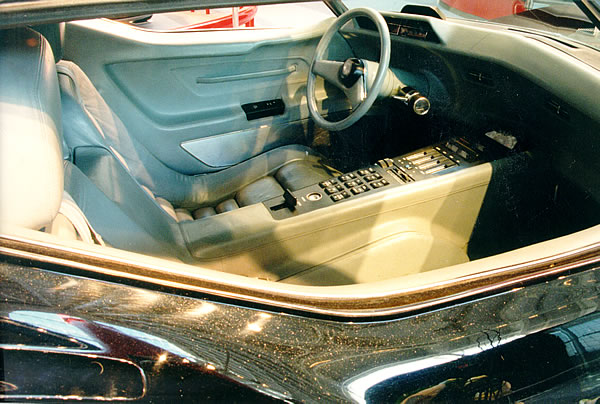 |
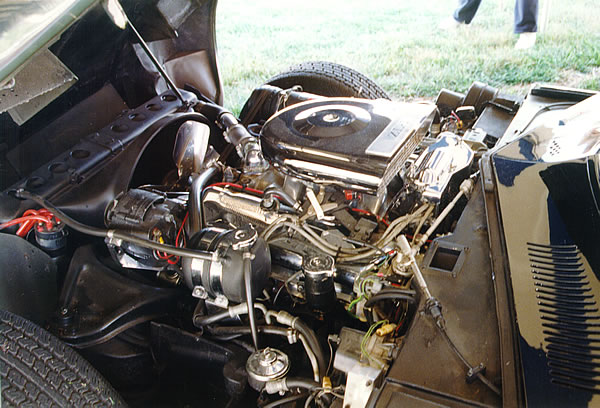 |
